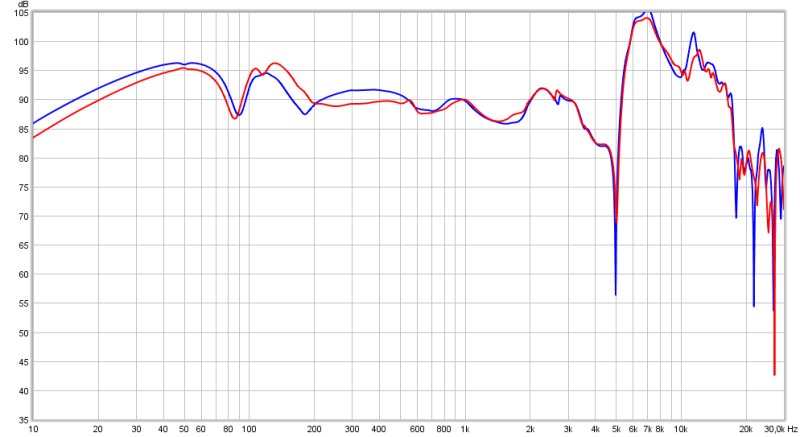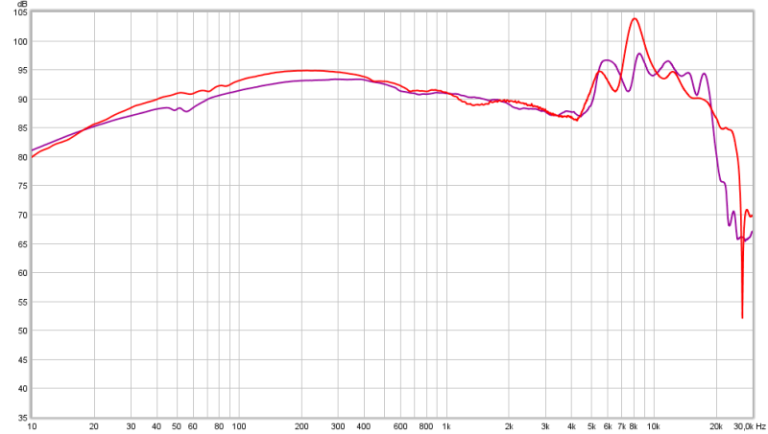It is claimed that the 600ohm version has thinner voicecoil wiring and thus is lighter in weight and should be 'faster'.
Those that measured different impedance versions in the past found there are differences but I can't relate those to weight of the moving parts.
Fact is they don't measure and sound the same with just a different impedance.
Below the differences between the stock Superlux HD660Pro in 32 and 150 ohm versions where differences don't appear to be in the treble part but in the lows.
This could lead one to draw the conclusion there is a substantial difference in the impedance part.
below the same HD660Pro but left and right channel of the 32 ohm version.
Differences in a quite similar way can be found here and is all due to production spread (pads/drivers).
On direct comparison the 32 ohm version stands out immediately but this is more because of differences in voltage efficiency than anything else.
105dB/V for 32Ω and 98dB/V for 150Ω


